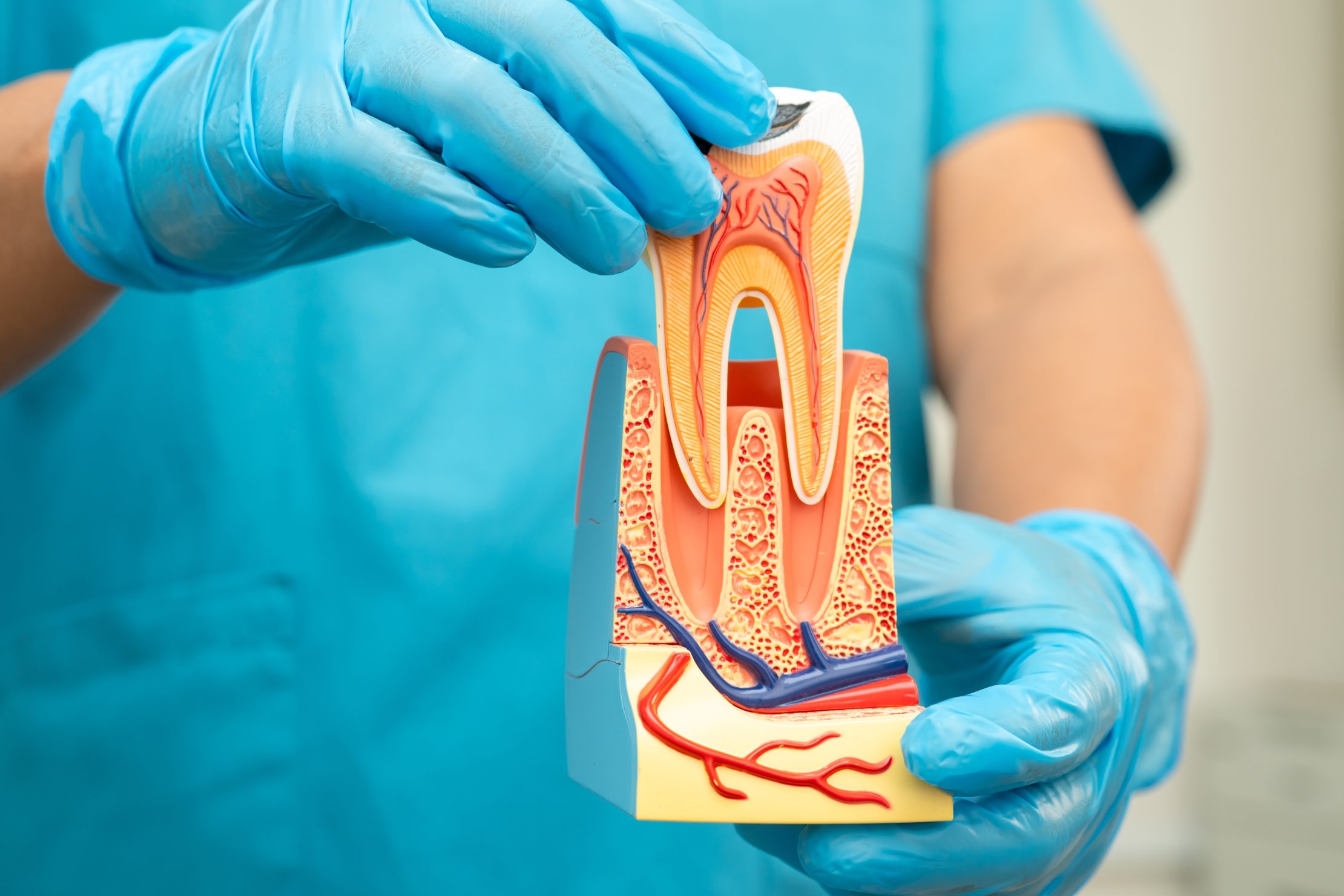Tooth pain can disrupt your sleep, meals, and day. If you feel sharp sensitivity or persistent throbbing, you’re not alone. Many wonder if a toothache will resolve on its own or require a root canal. At Gradeless Dental, we will help you understand the signs, the science behind the pain, and what treatment involves, and help you make an informed decision about next steps.
What Symptoms Suggest You Need a Root Canal?
Persistent tooth pain, sensitivity to hot or cold that lingers, tenderness when chewing, swelling, or a pimple-like bump on the gums may indicate an infected tooth. Discomfort that wakes you at night or severe pain after biting down are also signs of infection that merit prompt evaluation.
Understanding What Hurts Inside the Tooth
Inside the tooth is a soft part called the pulp chamber, containing nerve tissue, blood vessels, and connective tissue. When bacteria reach the tooth’s nerve through a deep cavity, cracked tooth, or trauma, this soft tissue can become inflamed or infected. This inflammation creates pressure in the root of the tooth, causing throbbing, stabbing, or radiating pain.
Common Causes to Watch For
- Deep decay breaching enamel and dentin can let bacteria travel down the root canal into the pulp.
- A deep cavity or cracked tooth may lead to a tooth abscess.
- Ongoing dental work on a compromised tooth can irritate the pulp over time.
- Signs of infection might include gum swelling near the crown, temperature sensitivity lasting more than a few seconds, and persistent tooth pain unresponsive to home care.
How Root Canal Treatment Saves a Natural Tooth
Endodontic treatment, or root canal therapy, addresses the root cause inside the tooth rather than masking symptoms. During a root canal, a dentist removes the infected pulp, disinfects the canals, and seals the space to prevent reinfection. The goal is to preserve the treated tooth and protect your oral health while relieving pain.
The American Association of Endodontists describes this procedure as a predictable way to avoid tooth loss when the pulp is inflamed or infected. Saving a natural tooth supports chewing efficiency, jawbone stability, and overall function compared with extraction and replacement.
Main Steps of Root Canal Treatment
- Local anesthesia is administered for comfort.
- A dental dam isolates the area to keep it clean.
- The dentist creates a small opening through the crown to access the pulp chamber and root canal spaces.
- Infected or inflamed tissue is removed, and the canals are shaped and disinfected.
- The canals are sealed with sealer paste and a biocompatible material.
- A temporary filling may be placed while the tooth heals.
- A permanent crown is typically recommended later to reinforce the tooth above the gumline.
Most appointments take a couple of hours, depending on the number of canals and root complexity. Your provider will explain the main steps before starting and tailor care to your comfort.
Does a Root Canal Hurt?
With local anesthetic and gentle technique, most patients report the experience feels similar to getting a filling. After the appointment, tenderness is common and can usually be managed with over-the-counter pain medications as advised by your provider. If your case is complex, your dentist may refer you to a root canal specialist for advanced therapy. Choosing a clinician who communicates clearly and uses a calm, stepwise approach can help you feel at ease throughout the treatment.
When Is Extraction Considered?
When infection is extensive or the tooth has structural damage that cannot be repaired, your provider may discuss extraction. The loss of the tooth can affect bite function and neighboring teeth. In such situations, options like dental implants might be considered after healing. Saving the natural tooth with root canal treatment, when appropriate, may reduce the risk of shifting and long-term dental costs associated with replacement.
How Long Does Healing Take?
Initial soreness after a root canal typically improves over several days. You will avoid chewing on the treated tooth until the permanent crown is placed. Most people return to normal routines quickly. If you notice increasing discomfort, swelling, or new signs of infection, contact your dentist for reassessment and care adjustment.
Cost, Coverage, and Practical Questions
In the United States, dental treatment costs vary by tooth, complexity, and whether a specialist is involved. Many dental insurance policies provide benefits for root canal treatment and crowns, though coverage differs by plan. Your best estimate will come from a transparent conversation with your practice about costs. The office team can outline fees, discuss payment options, and explain how your plan handles endodontic treatment.
How to Tell If Your Pain Is Urgent
- Severe pain that lingers after cold or hot exposure
- Pain when chewing or tapping the crown
- Gum swelling, tenderness, or a draining bump
- Darkening of the tooth or a persistent bad taste
- Fever alongside dental pain
These can be signs of a tooth abscess or advancing infection. A timely dental procedure may help prevent tooth loss and reduce the chance of an emergency.
What to Expect From Your Appointment
Your dentist will review your symptoms, examine the tooth, and take digital images to evaluate the roots. They will look for deep decay, fractures, or other causes of inflammation. If a root canal is recommended, you will learn the plan for local anesthesia, the use of a dental dam, and how the canals will be cleaned and sealed. You will also discuss whether a permanent crown is needed to reinforce the treated tooth.
Relief and Prevention Go Hand in Hand
Once pain is under control, your provider may make personalized recommendations for long-term oral health. Good oral hygiene, regular brushing, and consistent professional cleanings may reduce your risk of future deep cavity formation. Wearing a nightguard for clenching, addressing dry mouth, and replacing failing restorations promptly can also help protect the tooth from new damage.
Those Searching for a Root Canal Dentist in Fishers, IN
If you have persistent tooth pain, you do not need to handle it alone. Many patients search for a root canal dentist in Fishers, IN, when discomfort interrupts daily life. A calm evaluation can clarify whether endodontic therapy, a different treatment, or supportive care is the right next step for you.
Your Next Step
Tooth pain seldom improves without understanding its cause. A careful exam can determine whether a cavity, fractured cusp, or infection in the root canal spaces is responsible. Discuss your symptoms, goals, and comfort preferences with a dentist who will take time to listen and explain your options.
Schedule a consultation to learn more about whether root canal therapy may help you keep your natural tooth and feel better.








